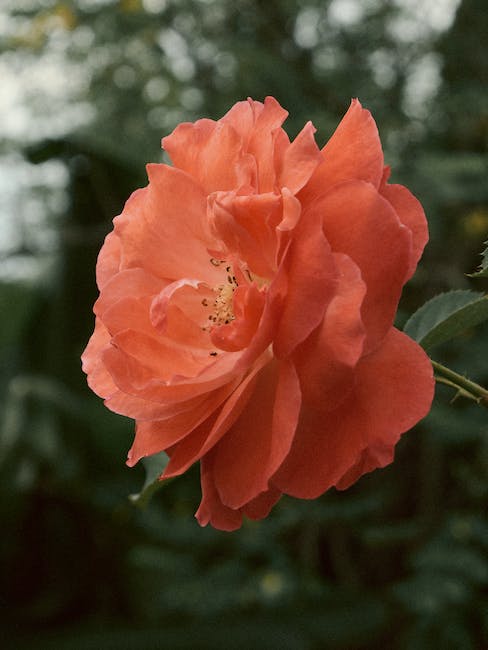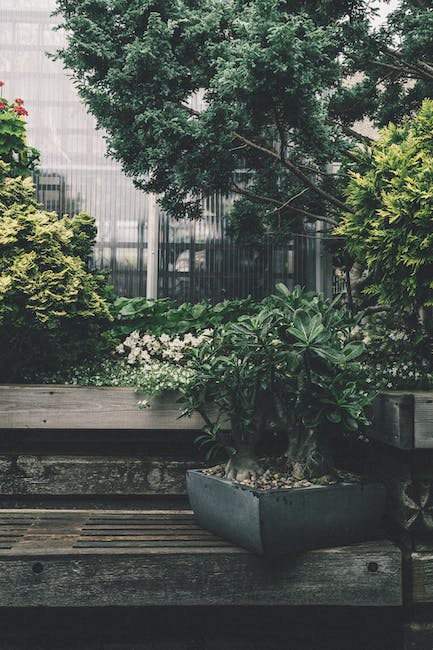Botanical gardens provide an oasis of tranquility, beauty, and biodiversity that can give everyone a chance to relax, learn, and reconnect with nature. Visiting botanical gardens is an excellent way to spend quality time with loved ones or on your own, while experiencing a wide variety of plant species from all over the world. Here are ten steps to plan a successful and enriching visit to a botanical garden.
Step 1: Research and Choose Your Destination

The United States is home to numerous botanical gardens that vary in size and theme, so it’s important to do your research and choose the best one for your interests. One of the most famous gardens is the United States Botanic Garden in Washington D.C. This garden features a conservatory with over 4,000 plants and an impressive rose garden. Seeing the garden lighted up during the holidays also makes for a magical experience. Another one of the best botanical gardens in the country is the Fairchild Tropical Botanic Garden in Miami, Florida. The Fairchild boasts a stunning collection of palms, cycads, and flowering trees that offer a tropical experience like no other. If you are interested in vertical gardens, you should visit the The New York Botanical Garden. This impressive garden is home to a 50,000-plant vertical garden that stands around 25-feets high.
Step 2: Plan Your Visit

Before heading out, it’s best to do your research, especially if you are travelling far. Check the hours of operation, as they may be shorter or longer than you anticipated. Also, be sure to check admission prices, as some botanical gardens have free admission, but others require a fee. Additionally, a good way to avoid crowds is by visiting during week days. Make a list of the garden’s main features that you want to see, and plan your visit accordingly. Some botanical gardens even offer online maps to their visitors to help them navigate through the garden. Be sure to wear comfortable shoes, dress appropriately, and bring sunscreen, a hat, and plenty of water.
Step 3: Research Guided Tours or Activities

If you want a more in-depth experience, many botanical gardens offer guided tours or activities, such as bird watching, photography classes, or seasonal events such as butterfly releases. Be sure to research these options ahead of time, and reserve a spot if necessary. This will make sure you don’t miss out on the intriguing programs the garden offers. It can elevate your visit by providing a more adventurous journey than just walking through the garden on your own.
Step 4: Consider Accommodations and Transportation

If your chosen botanical garden is far from your home, consider accommodations and transportation options. Some botanical gardens are located near hotels, and public transportation, while others may require a rental car or private transportation. It would also be helpful to research other attractions or activities nearby the botanical garden, so you can make the most out of your trip.
Step 5: Pack a Picnic Lunch

In most cases, botanical gardens have designated picnic areas where visitors can enjoy a meal surrounded by serene beauty. Packing a picnic lunch not only saves money, but also provides a relaxing break in the middle of your visit. Bringing food also ensures that you can eat in a comfortable, yet picturesque environment. Just be sure to check the garden’s rules regarding outside food and beverages, as some botanical gardens may prohibit food inside.
Step 6: Learn About the Botanical Garden’s History
Before visiting the garden, it may be helpful to do research regarding their history and significance to fully appreciate what you are seeing. Many botanical gardens have interesting stories and historical backgrounds that can enrich your visit. You may even discover new things you never knew about botanical gardens. Furthermore, taking note of the garden’s history can give you a better appreciation for the environment and the lengths it takes to maintain such a garden. Many gardens also have informative plaques or guided tours that provide insight into the garden’s past.
Step 7: Respect the Garden’s Rules
When visiting a botanical garden, it is important to respect the garden’s rules and regulations. This not only guarantees the preservation of the plants and wildlife, but it also shows respect to the garden’s workers who play a significant role in maintaining the garden’s delicate ecosystem. Be mindful of the environment and abstain from touching or damaging any of the plants, and stay on designated paths to avoid trampling the foliage. Do not litter, and make sure to dispose of any trash in designated bins.
Step 8: Take Your Time and Enjoy the Scenery
Botanical gardens are meant to be enjoyed at a leisurely pace. While there are many things to fully experience in a garden, there is no rush to complete everything in one fell swoop. Take your time and enjoy the scenery. Bring a camera and capture some of the garden’s most stunning views. Sit down on a bench, relax, and take it all in. These gardens provide a peaceful sanctuary from the hustle and bustle of daily life.
Step 9: Share Your Experience with Others
One of the rewarding things about visiting botanical gardens is sharing your experiences with others. Posting photos on social media or writing a blog about your experience can be quite helpful. Encourage others to visit the garden and also experience the tranquility and beauty of a botanical garden as well. Sharing your experiences can help spread appreciation for these beautiful gardens and encourage others to do the same.
Step 10: Consider Volunteering or Supporting the Garden
If you want to give back, many botanical gardens rely on volunteers and donations to help with the maintenance and upkeep. If you can, consider volunteering your time or making a contribution to support these important institutions. This can help ensure the longevity of the gardens and provide opportunities for future generations to enjoy. Volunteering can also provide a unique perspective on gardening and give an individual an experience they’ll never forget.








 You might also be interested in those articles related to solo traveling
You might also be interested in those articles related to solo traveling